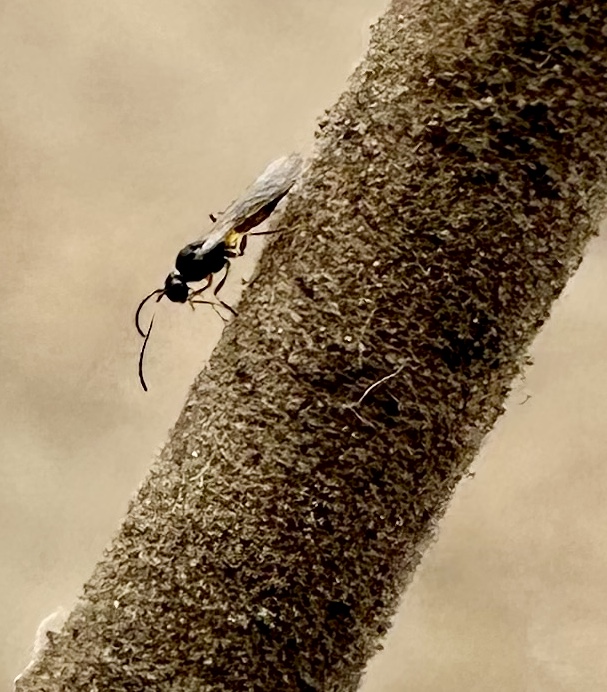We have been noting aphid emergence over the last two weeks, but there remain a lot of unhatched eggs around the buds and on the bark.
The unhatched eggs remaining may be primarily filbert aphid, Myzocallis coryli, as most of the aphid nymphs seen so far are hazelnut aphid, Corylobium avellanae. Hazelnut aphid in these images is easily distinguished by the presence of well-developed cornicles, which are the tubes emerging from the back of the abdomen. So far, we have not come up with a reliable method to differentiate the eggs of the two species either by location on the tree or by egg morphology.
We are somewhat mystified that we are seeing such a predominance of hazelnut rather than filbert aphid this year. Our research will provide some clues as to whether there is a biological or environmental factor that is leading to more hazelnut aphids.
Accompanying the emergence of the aphids is the parasitoid wasp Trioxys pallidus. This wasp was imported from Europe to control filbert aphid in the 1980s. The wasp overwinters inside aphid hosts on the tree. These large aphid mummies can currently be found on branches and catkin peduncles. The wasps are already looking for mates and foraging for aphids along branches. While they do fly, they are most commonly seen walking along the surface of the tree.





